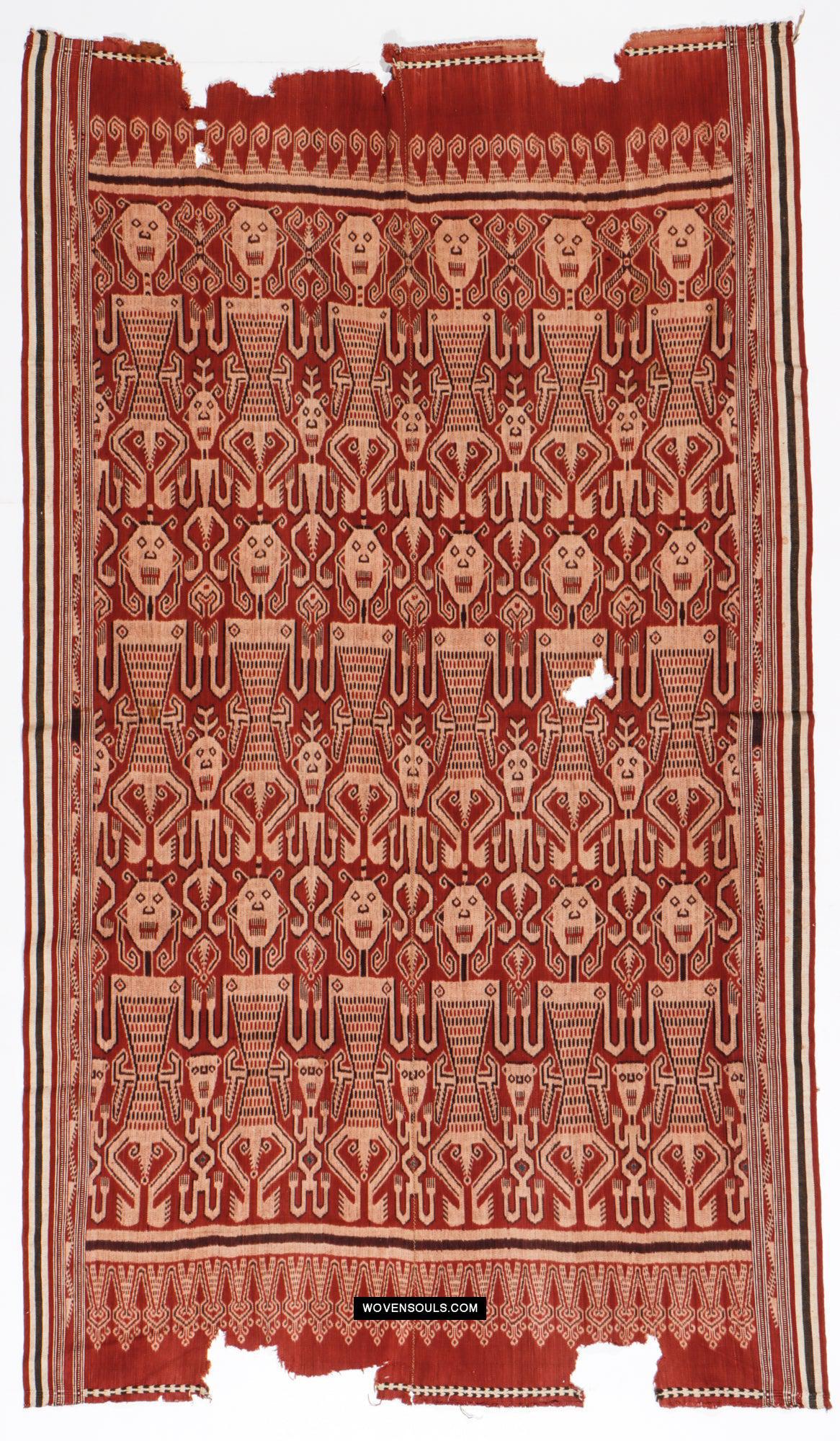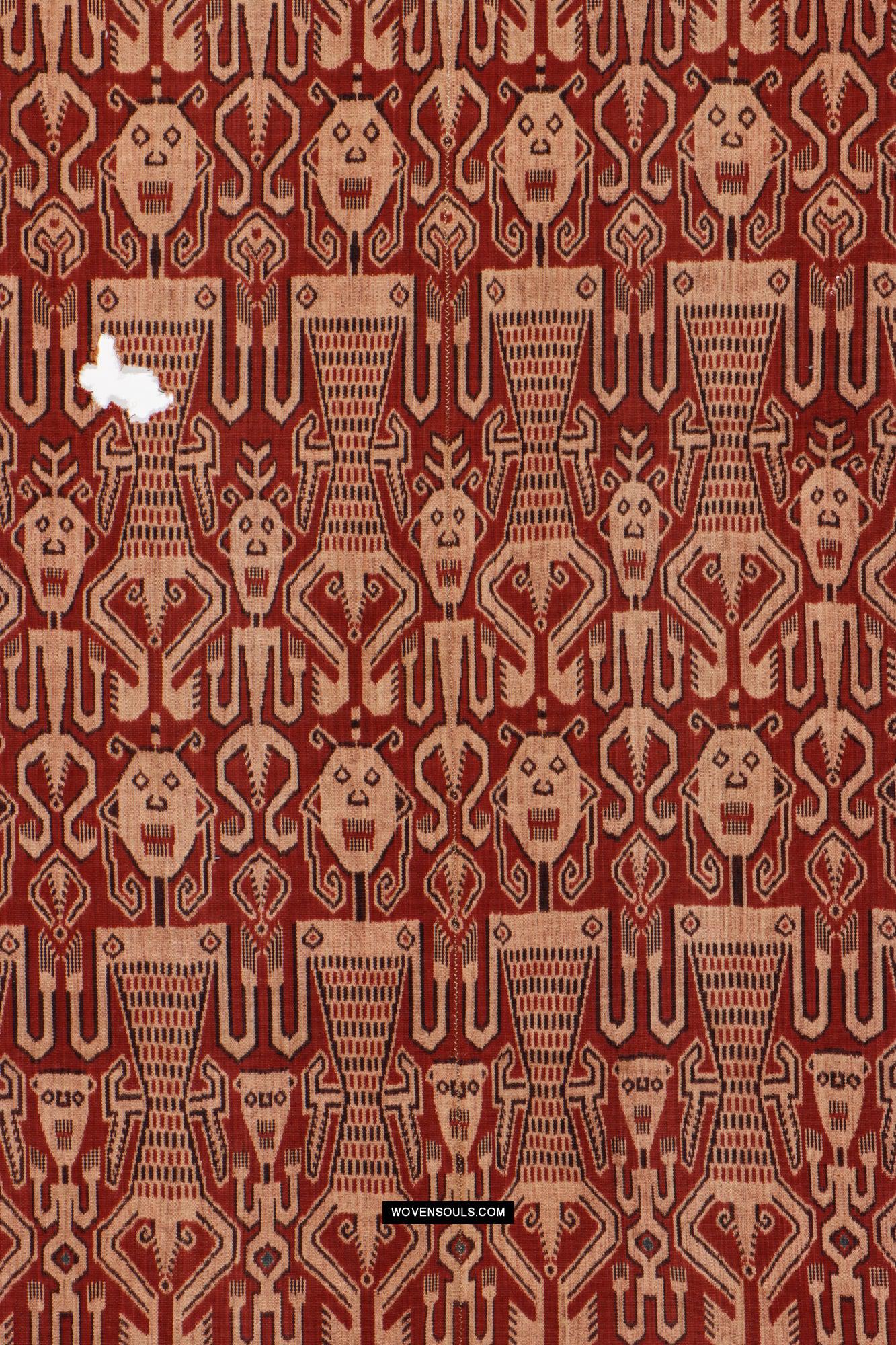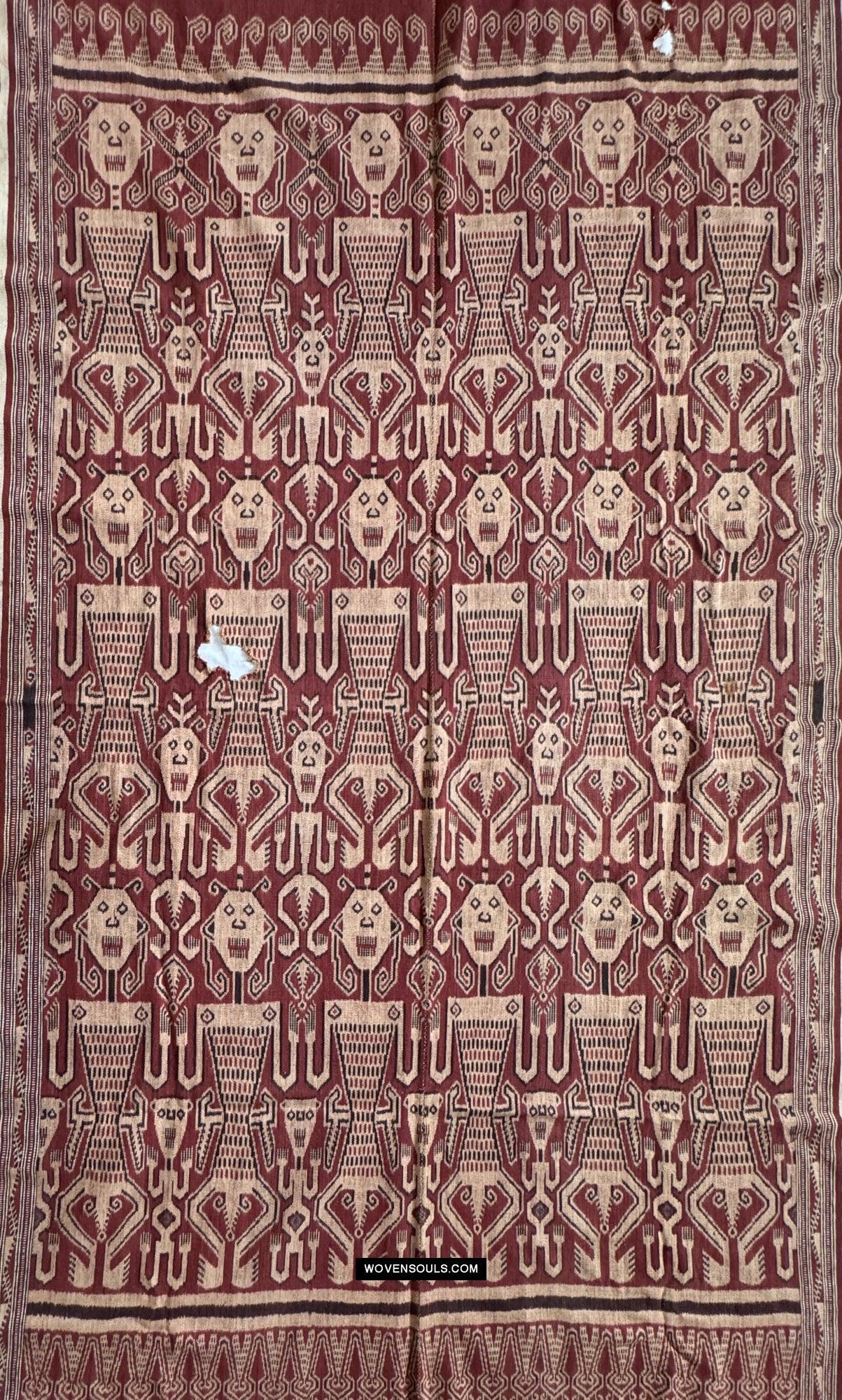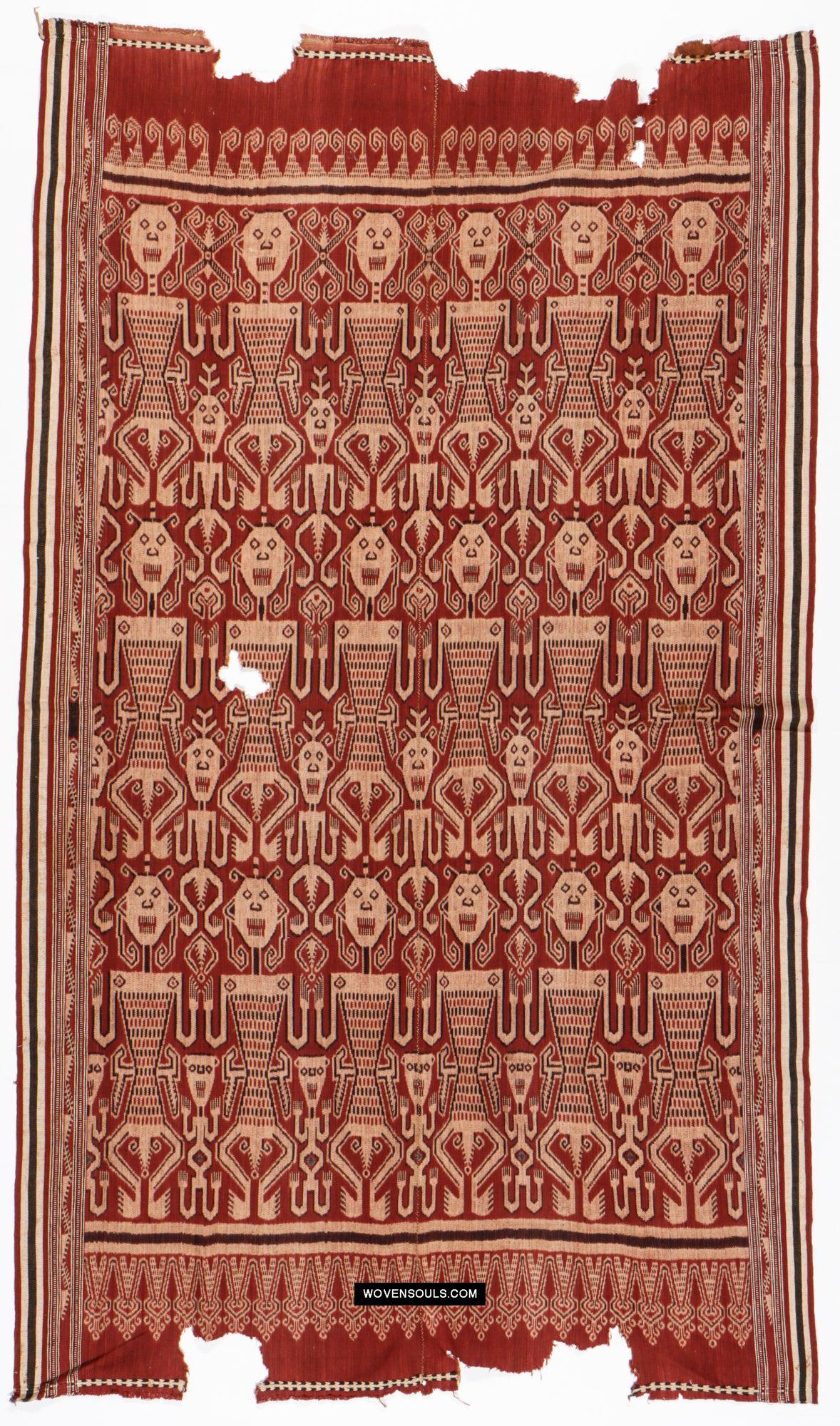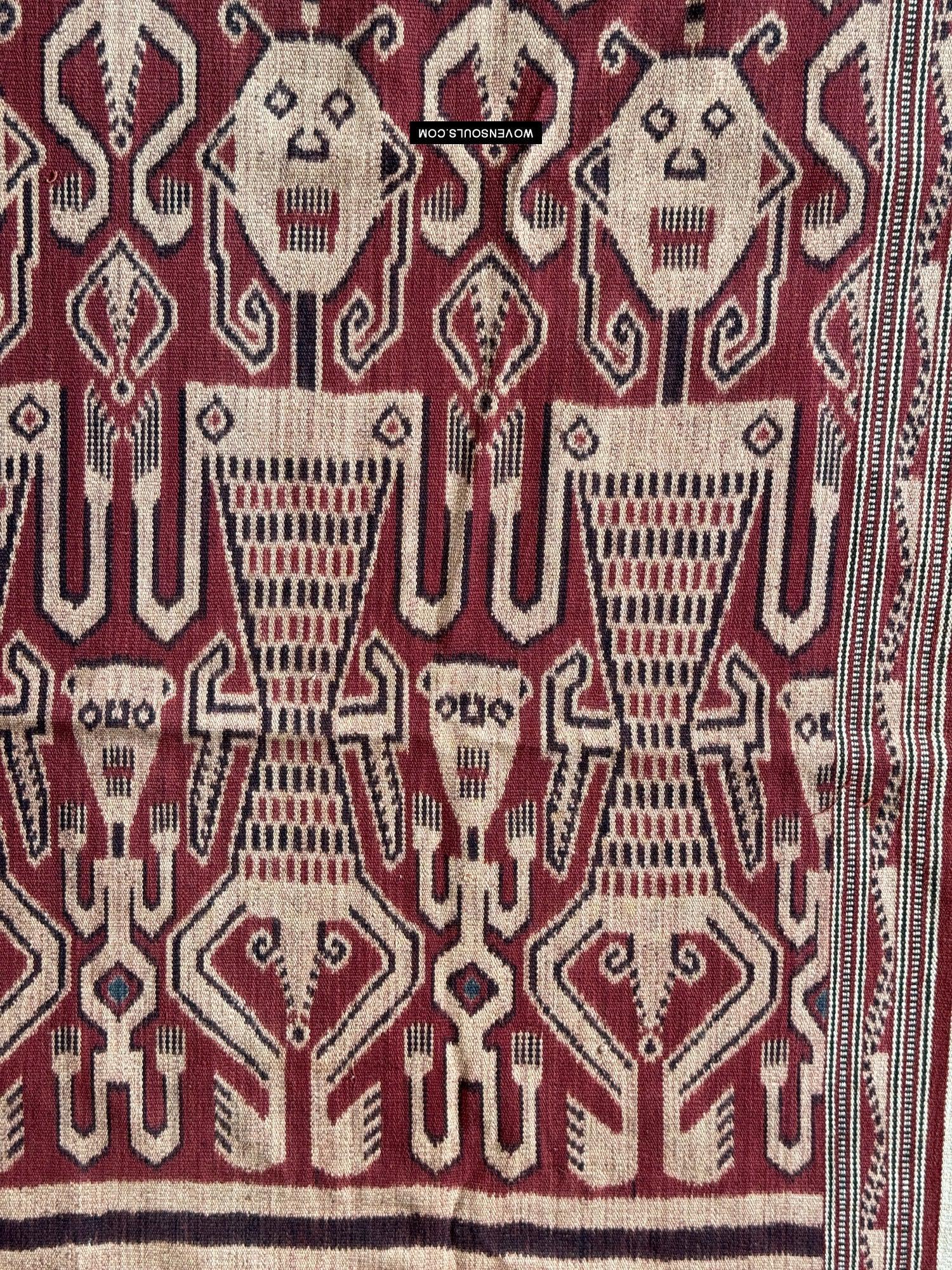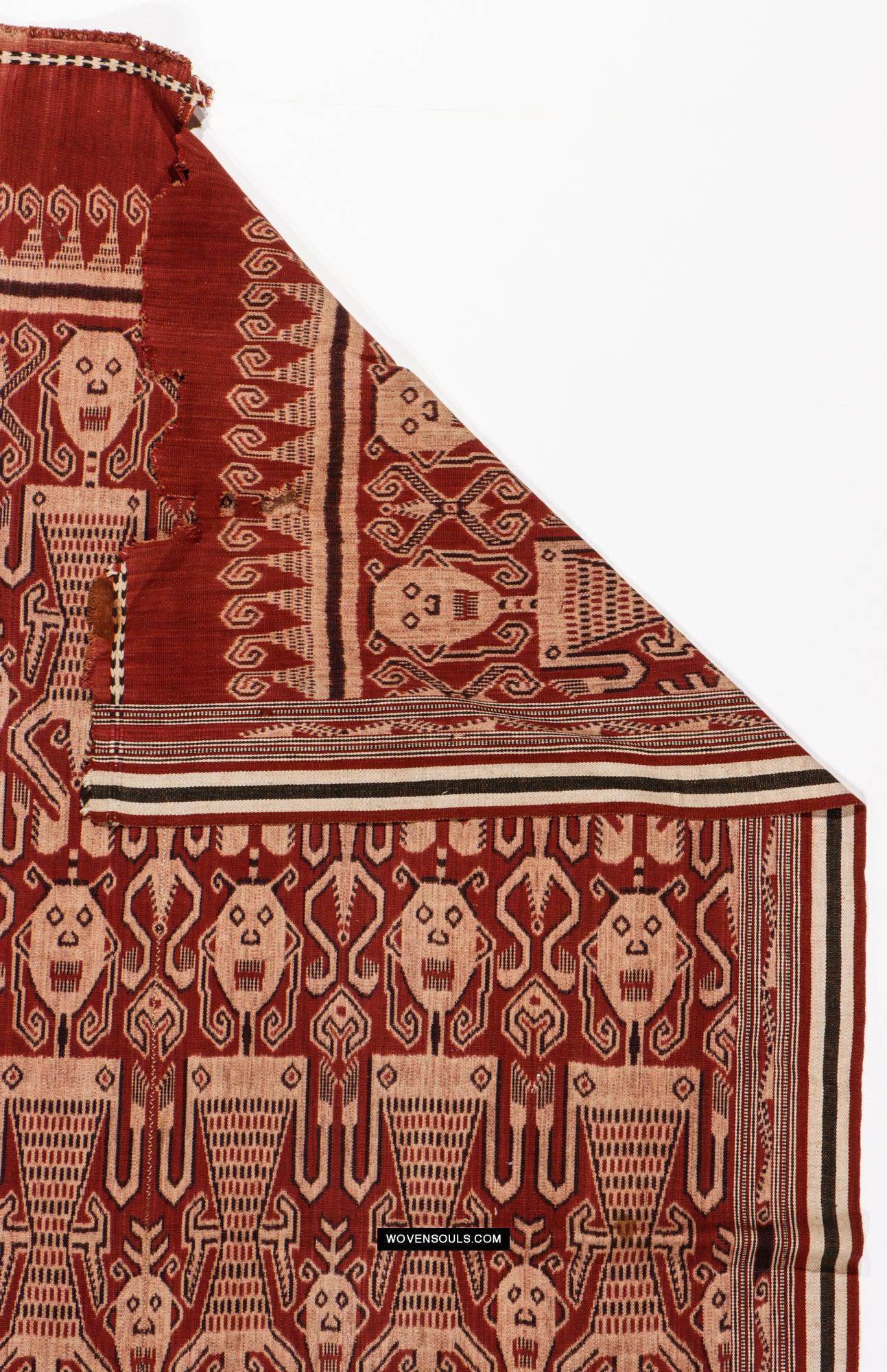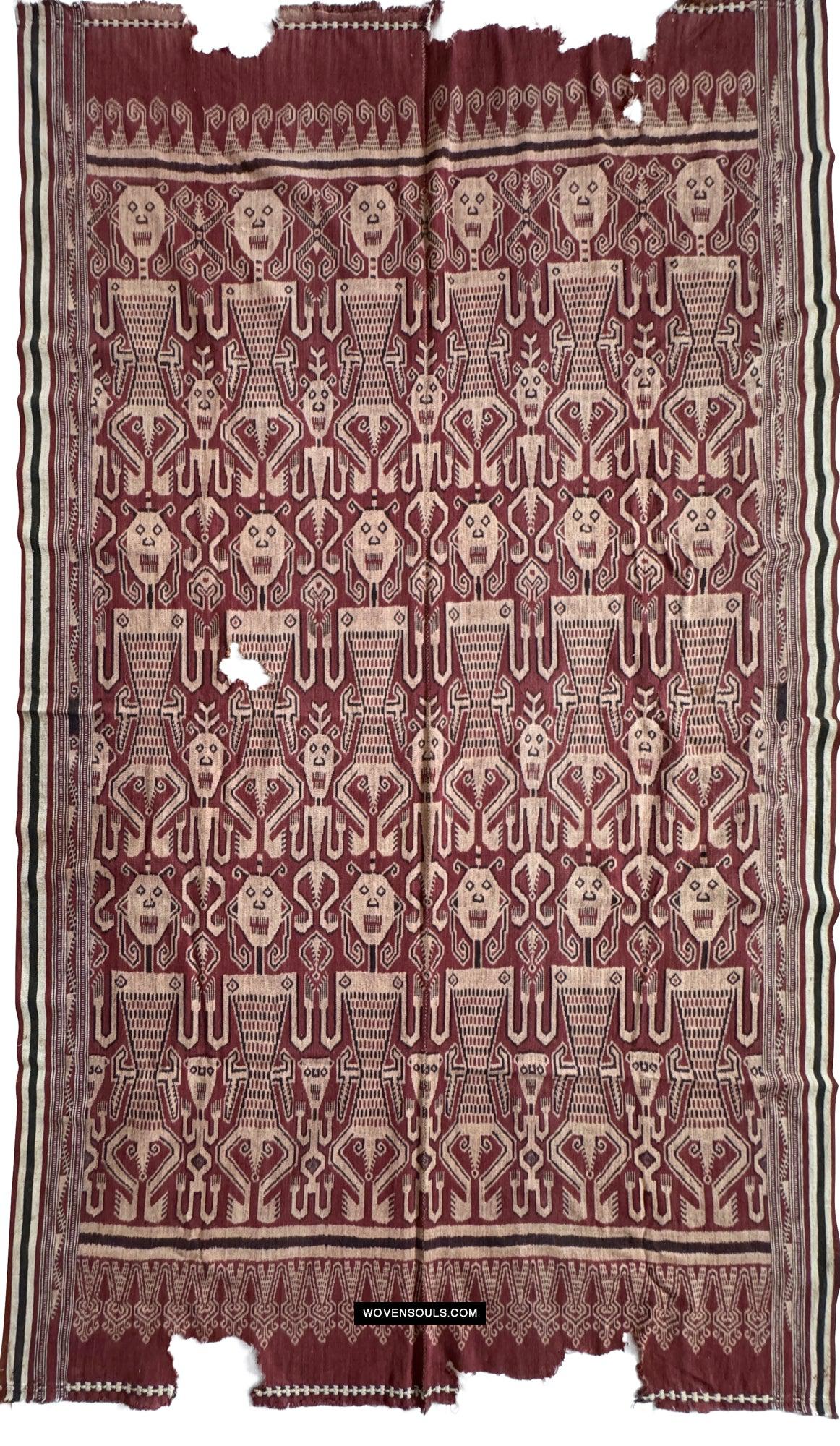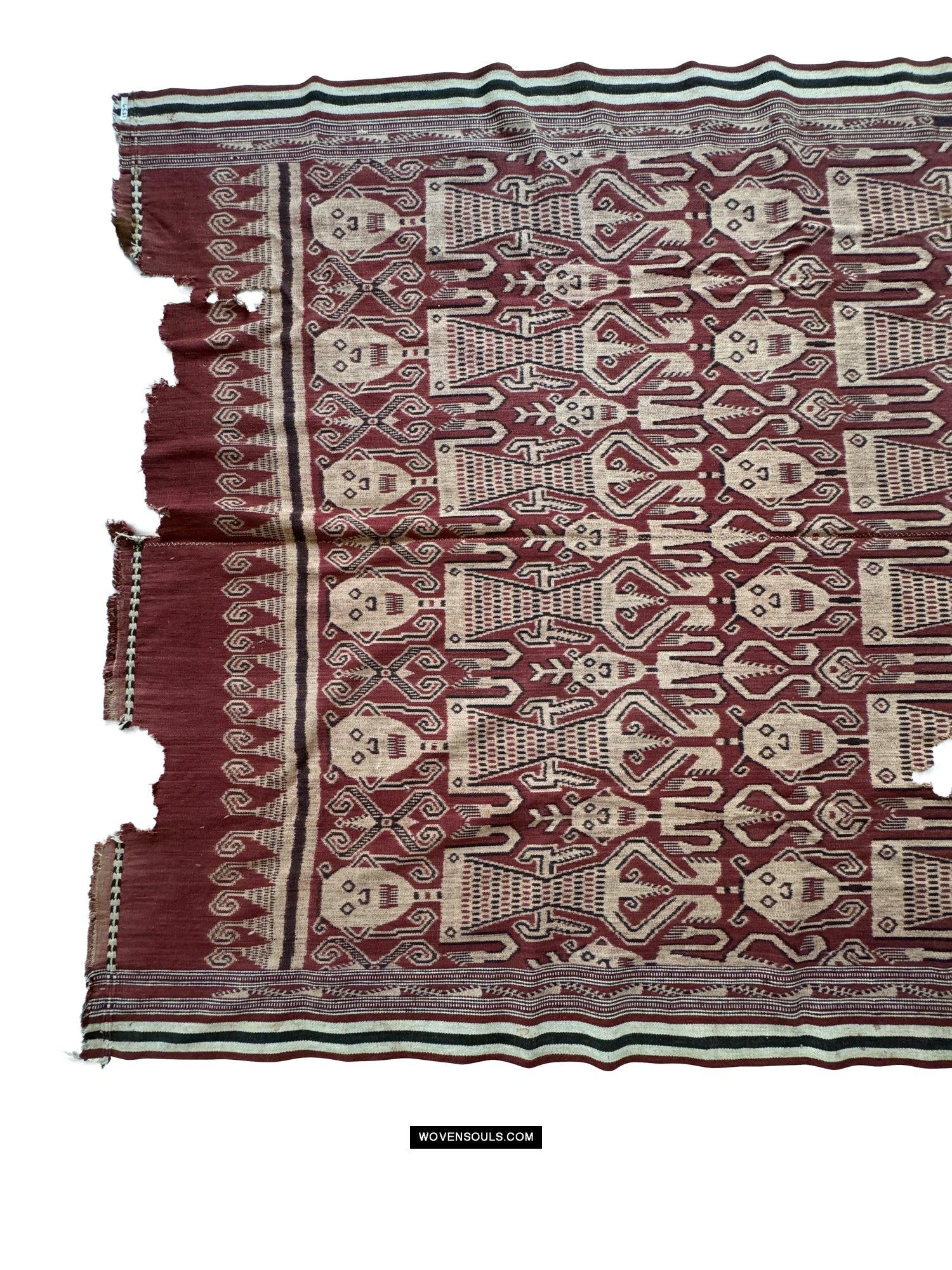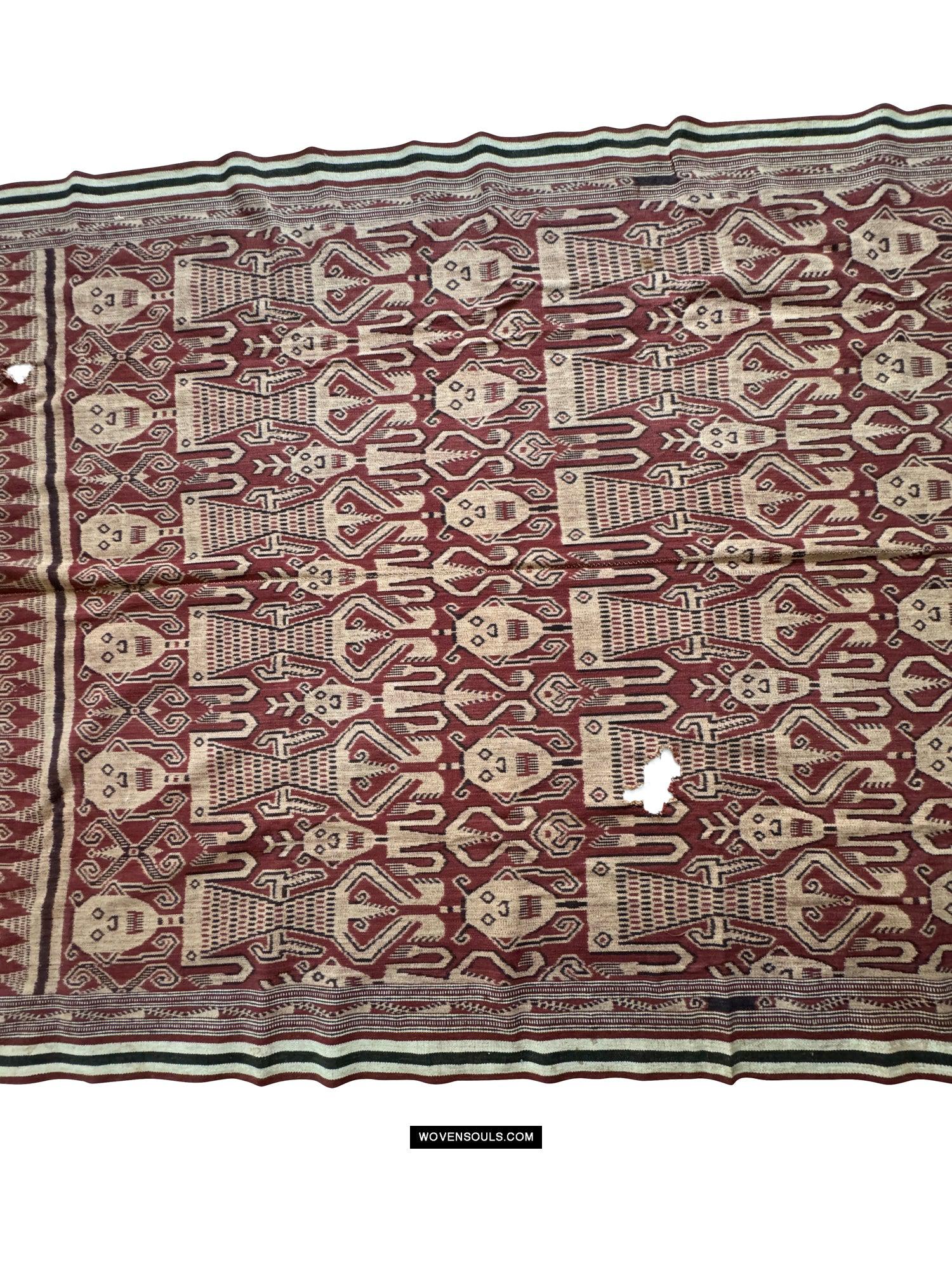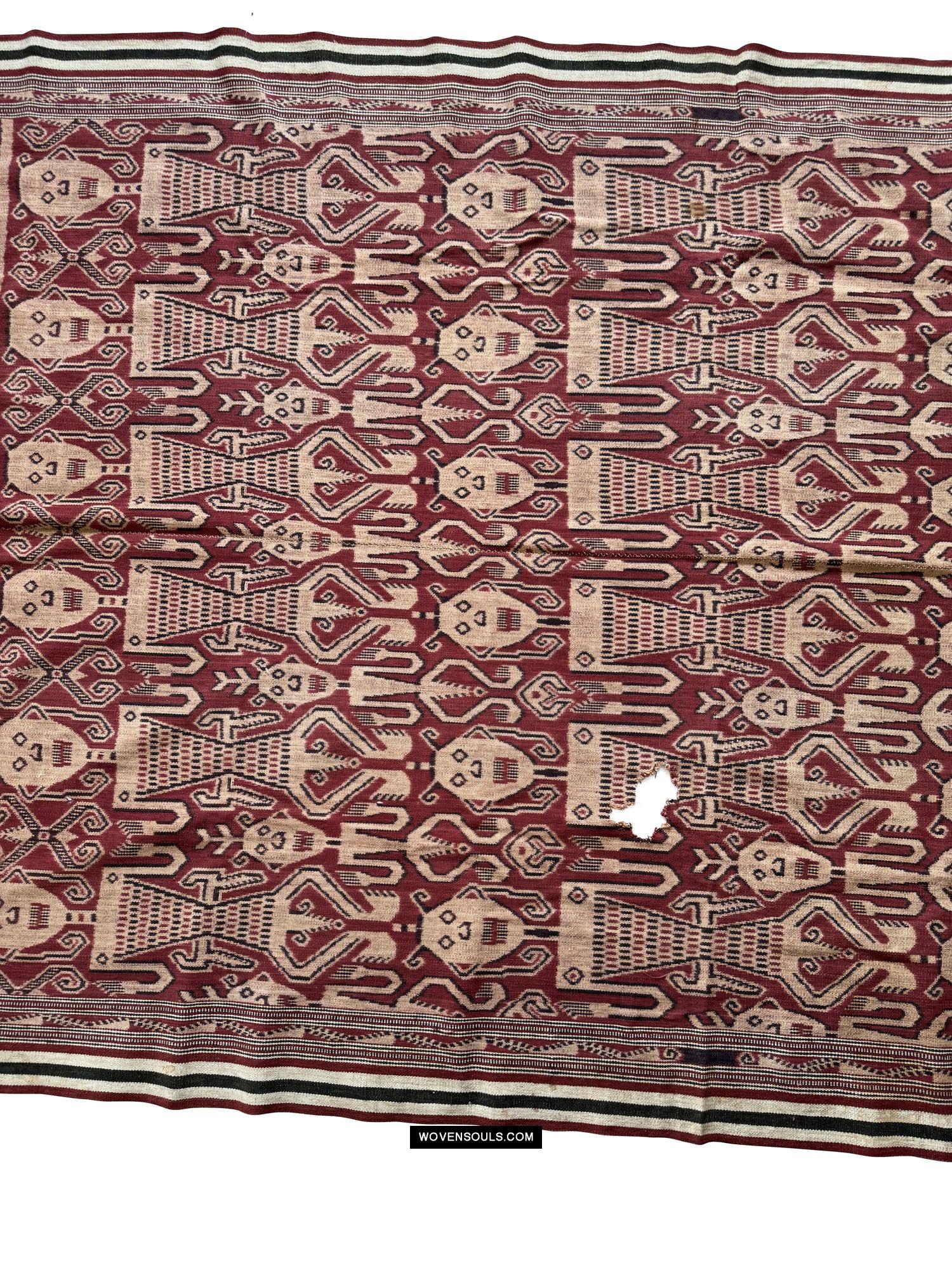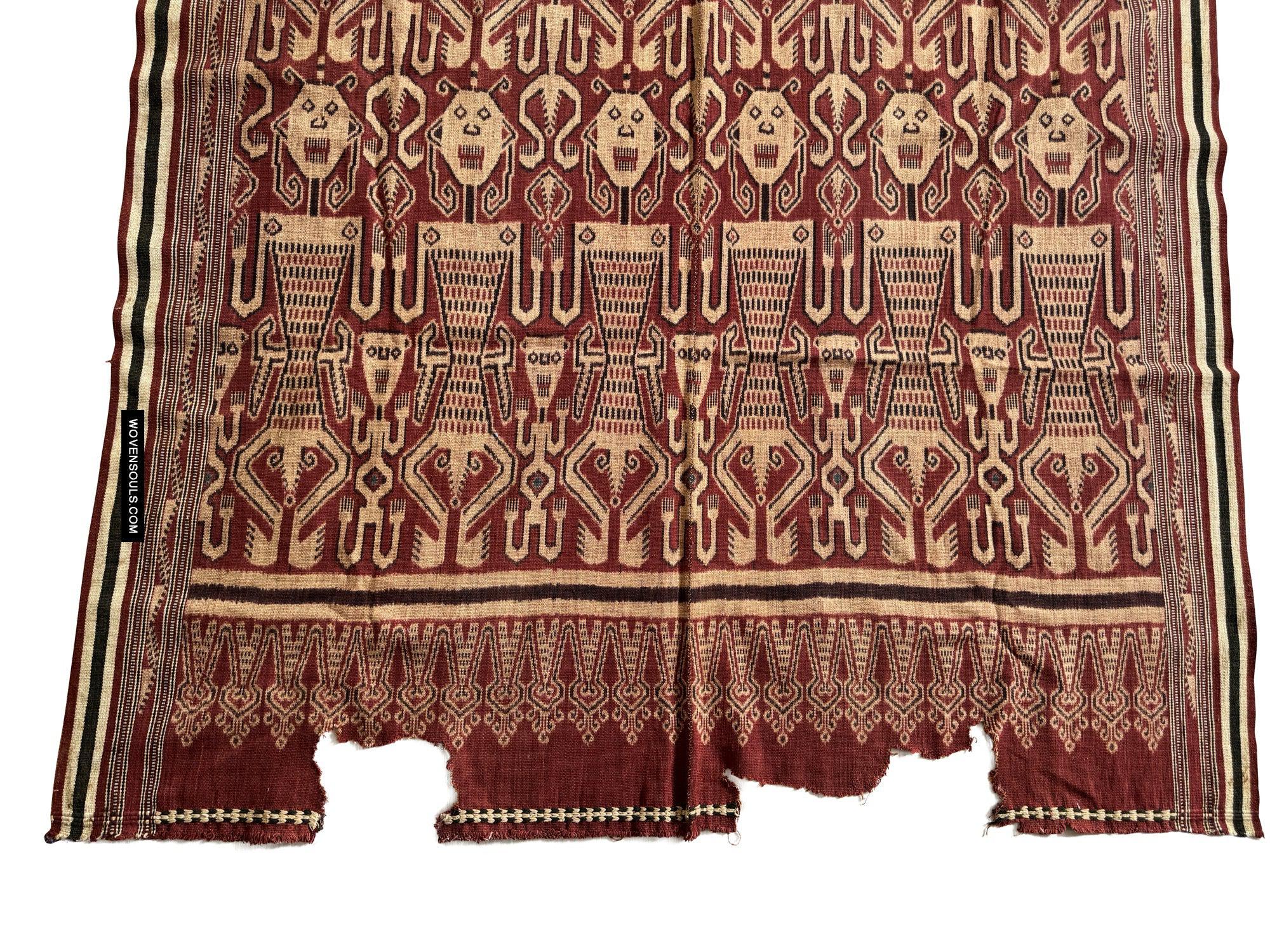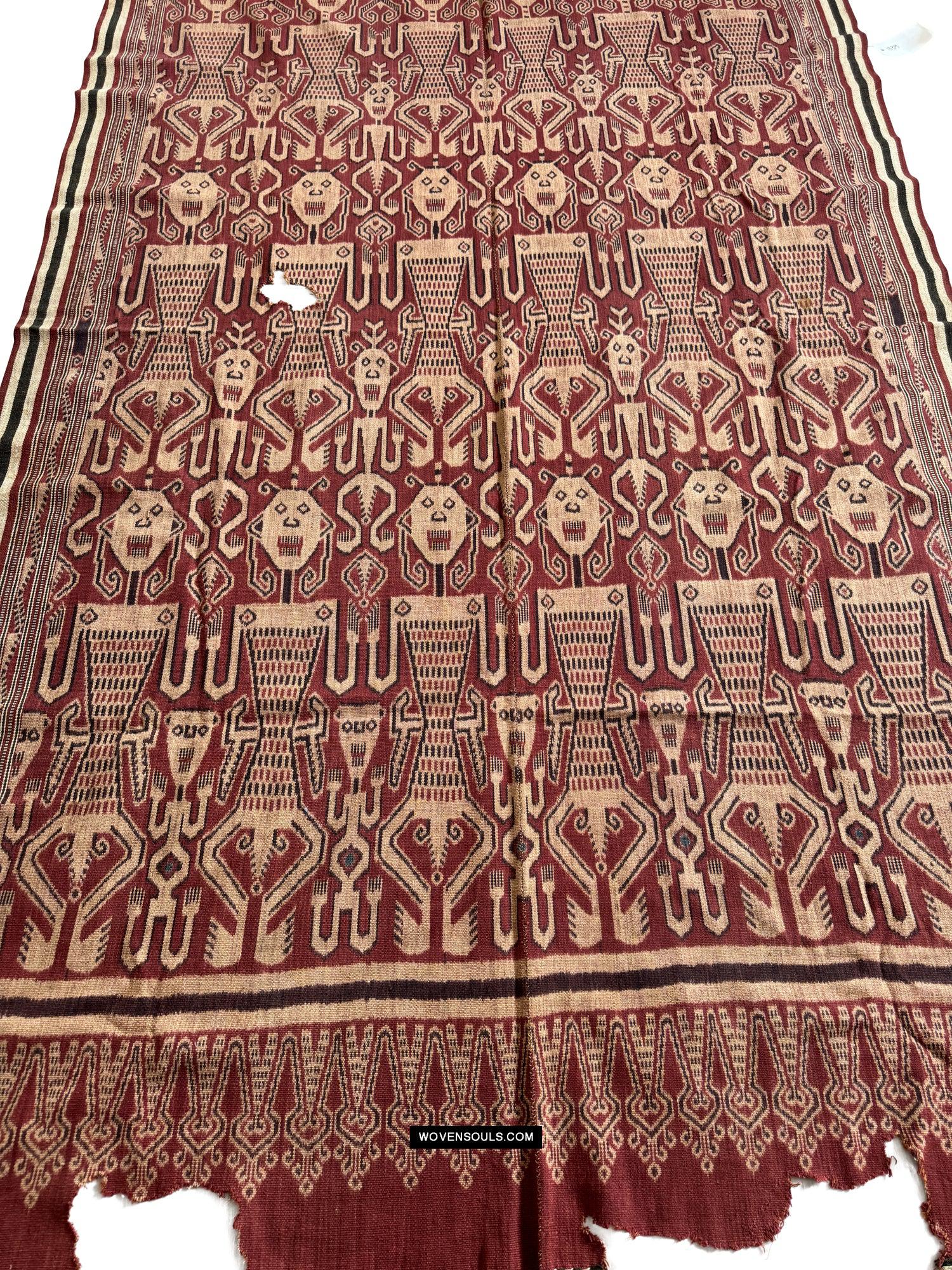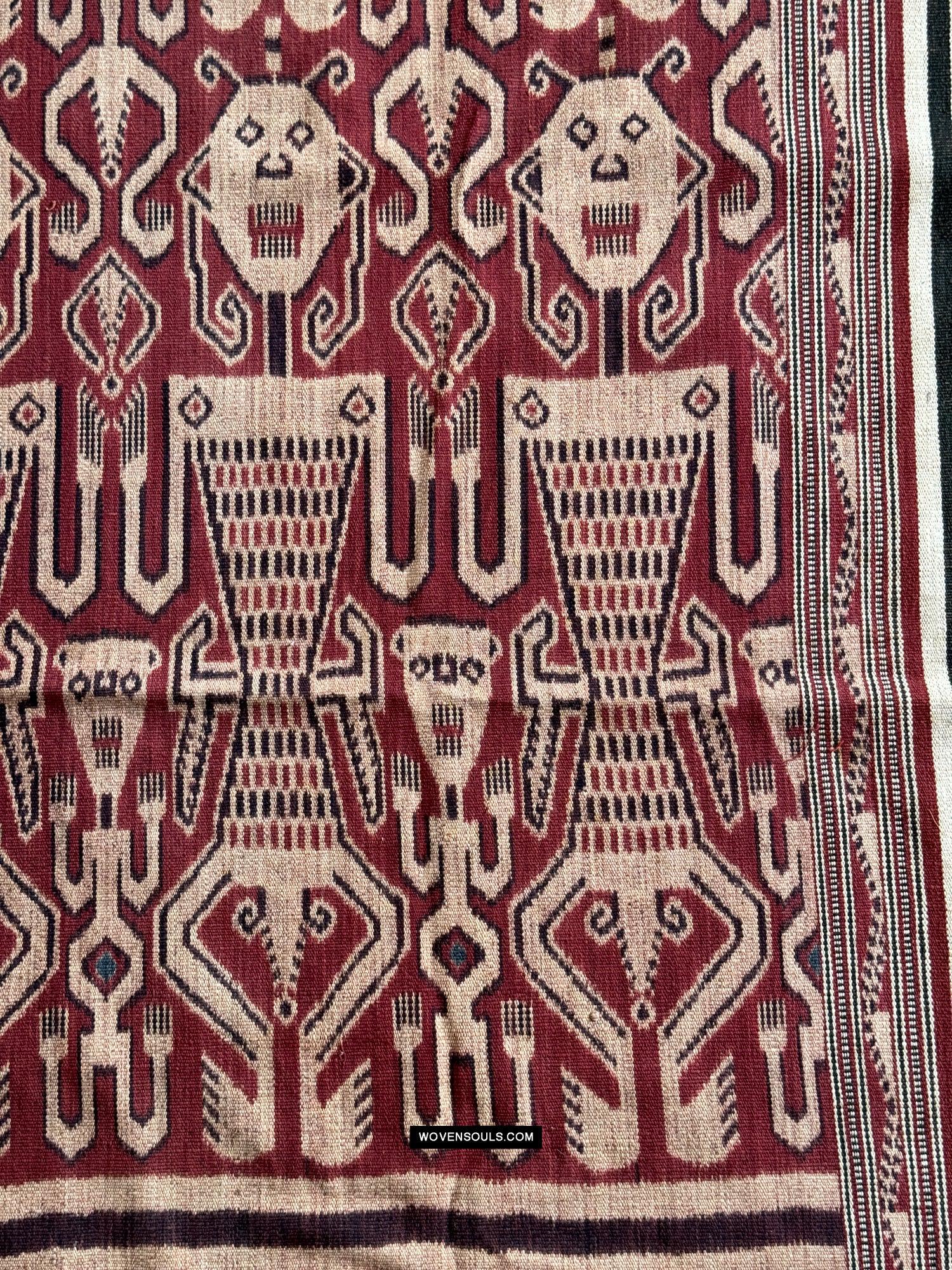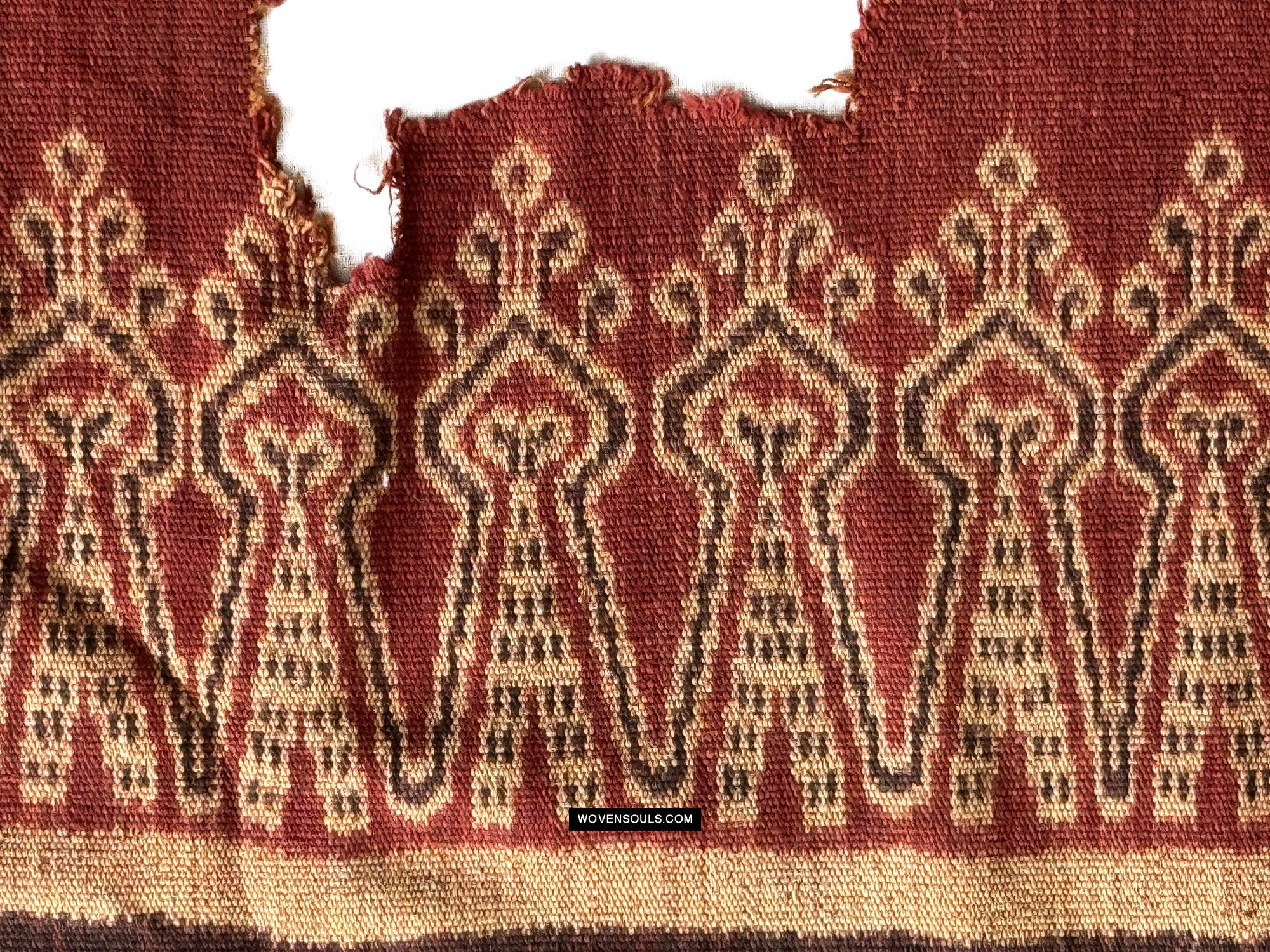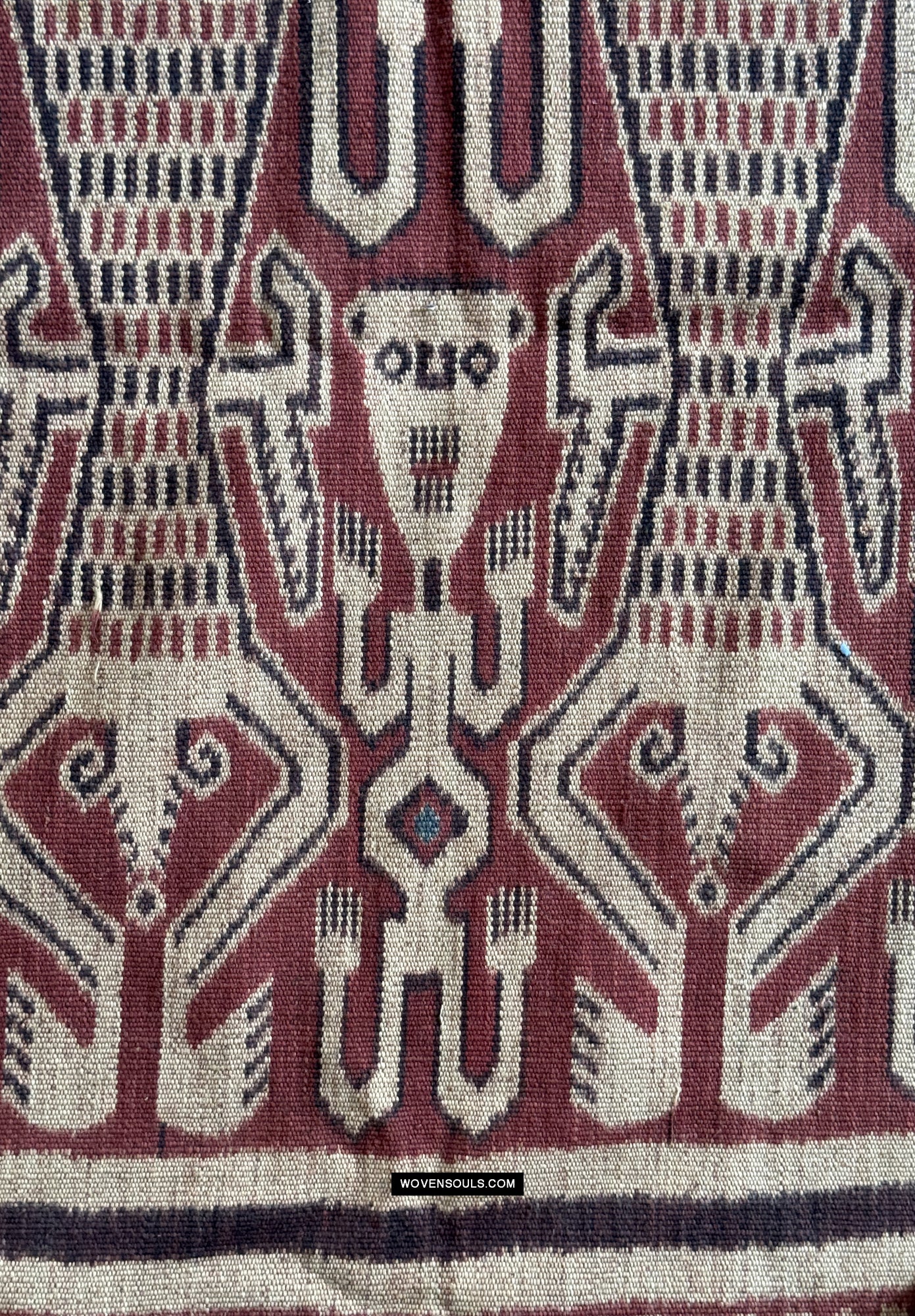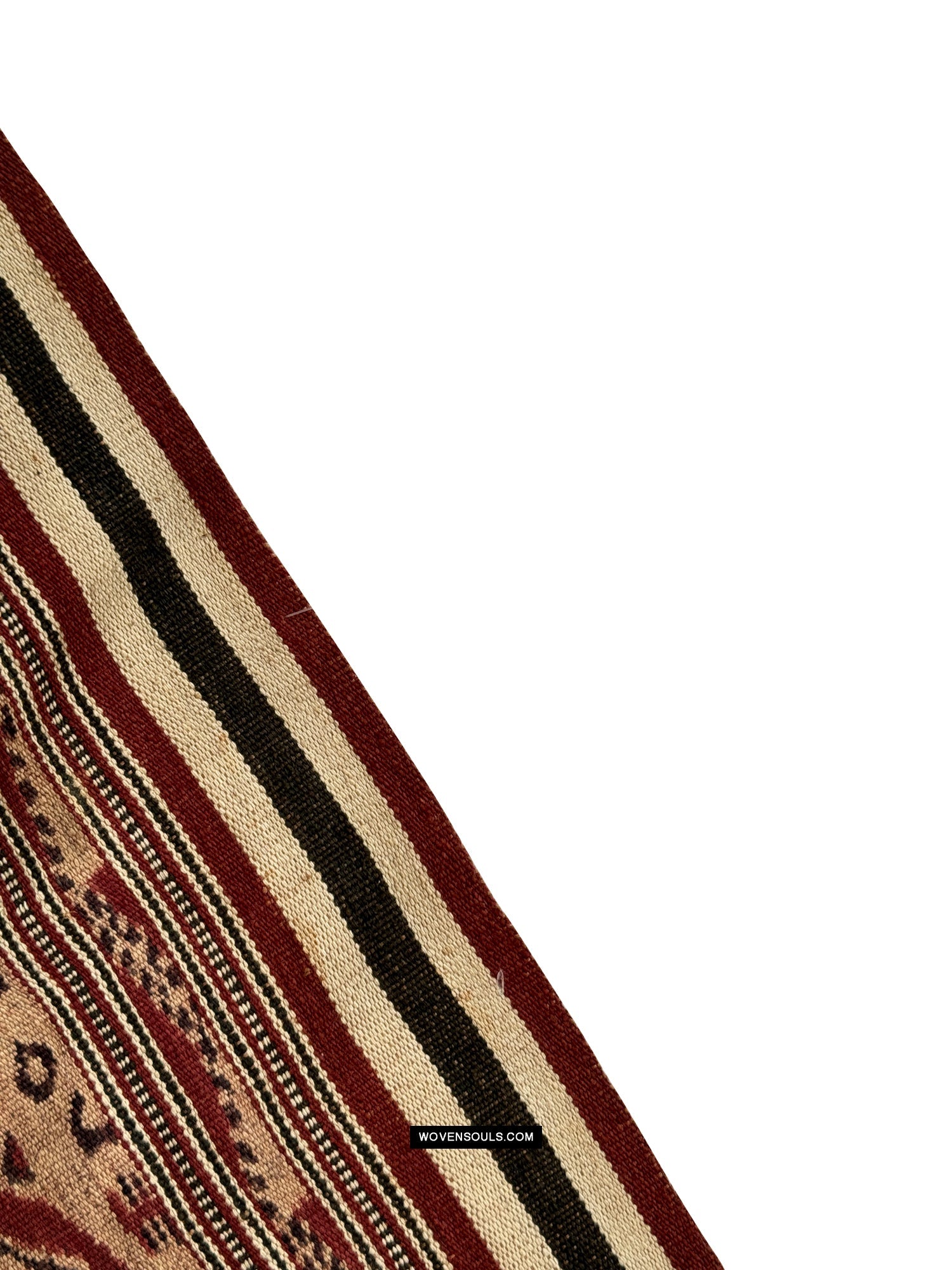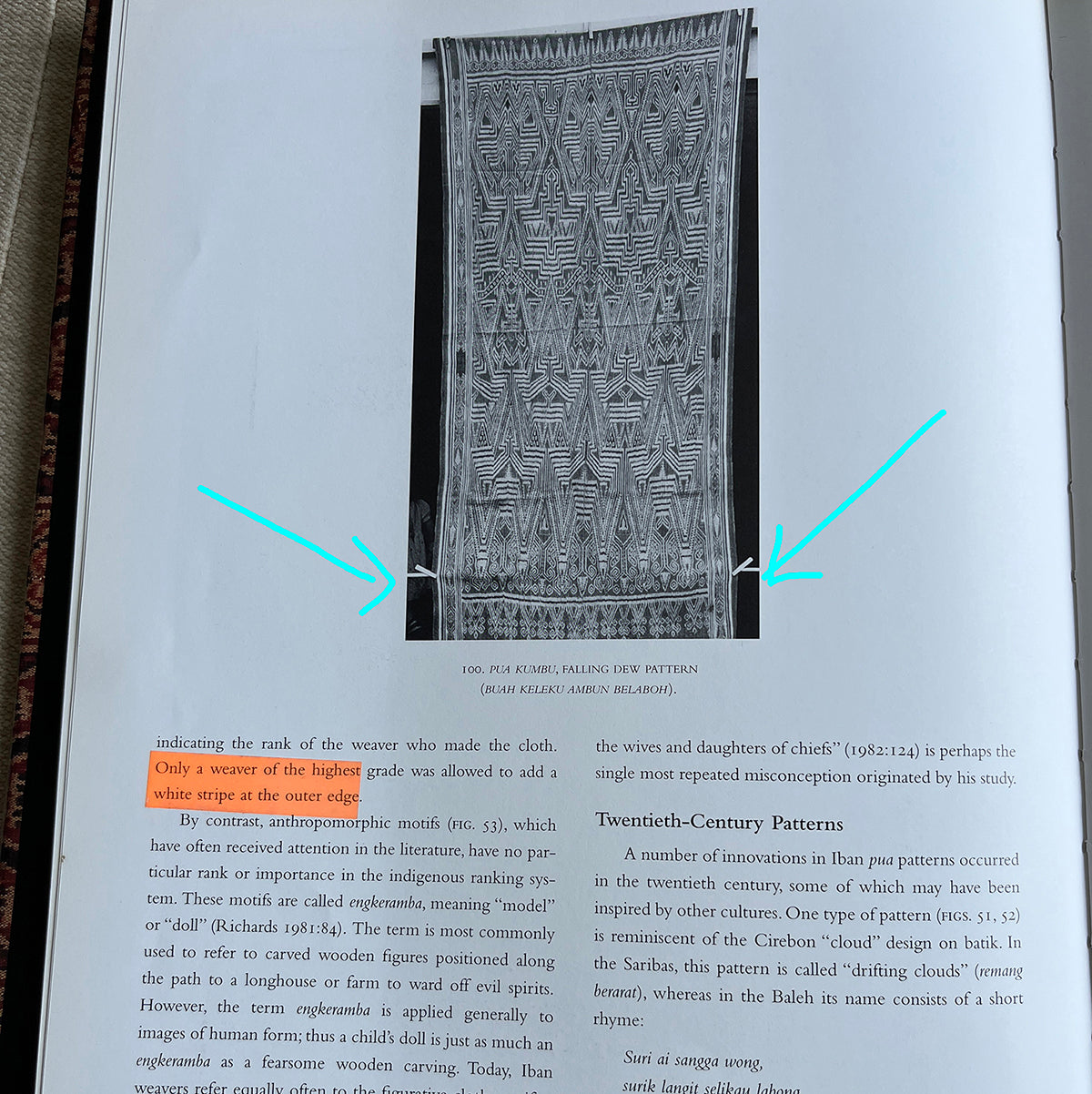1839 Antique Pua Kumbu Iban Ceremonial Ikat - Anthropomorphs / Engkaramba
Antique Iban Ceremonial Ikat Pua Kumbu
Has damage.
Among the Iban, textiles are treasured as they are more than just objects made of fibre.
In some cultures, such as the Iban, textiles have played a major, if not central role, in all the ceremonies surrounding the important events in life. Power structures among women are based on dyeing and weaving skills. Perhaps the most important materials owned by families were textiles.
Ikat textiles are among the hardest to make, as the tie-dye is done on the unwoven threads before they are woven into cloth. So with a design in the weaver's imagination, the thread is dyed in sections as per the pattern that is required to be created. This takes immense precision and calculation. So when we note that these textiles were made decades ago in the rainforests of Borneo - Kalimantan, Sabah & Sarawak, there is a sense of awe for the creators.
Further, textiles themselves were believed to have the power to connect to the spirit world. The motifs, the dyes and the complexity of the weaving - all factors that were a direct result of the weaver's skill and experience - contributed to the power held by a textile.
Only textiles with certain features could be used during the most important community ceremonies and the weavers of these therefore enjoyed an elevated status of prestige.
So to study an Iban textile, requires us to focus on patterns, motifs, complexity and lastly and equally importantly - the dyes. The process of dyeing enjoys a far greater role in the value chain of production of Iban textiles than it does in any other group of textiles.
Size: 140 x 240 cm / Damaged - with a dark red backing / patchwork repairs, the visual impact of the damage will be diminished.
MY NOTES ON THIS IKAT:
- Well-drawn Ikat with a very deep color
- There are two types of 'engkaramba' or spirit-figures or anthropomorphs seen in the textile laid out in alternating rows (18 +15). Note the difference in hairstyles across the rows.
- The larger figures have been patterned with rows of tiny black dashes alternating with rows of tiny rust dashes
- In creating Ikat, to have the black contained within a tiny area and not spillover into adjacent areas is itself a remarkable feat. Then, over and above that, to have all the dashes across the breadth of the textile aligned in neat rows is an extraordinary feat.
- Note the horizontal bands at the top and the bottom - these are signs of mastery at ikat weaving.
- Has a great presence
- Has damage problems that can be solved by mounting the textile on a plain maroon background.
- Note the white vertical bands at the outer edge - this is allowed to only highly skilled weavers (see last image)
CLICK TO SEE THE COMPLETE COLLECTION OF IKAT PUA KUMBU
This item has spent a lifetime being used for the purpose of its creation with the original artist/user. Signs of this life lived heartily may be present on the piece in the form of stains, thread loss, loose threads, holes, tears, color run and other imperfections. Therefore the condition must be assumed to be “not” perfect. More photos of such imperfections will be provided on request.
***

